Labrador Retrievers

What do you really know about North America’s most popular duck dog?
The Labrador retriever is undisputedly the most popular duck dog in North America. In fact, according to American Kennel Club registrations, Labs are the most popular dog in North America, period.
With good reason. Labs are friendly, outgoing dogs that take training well. They’re great family pets — the fact they might chew up your slippers or gnaw the bill off a wooden decoy or two notwithstanding.
And of course, many Labs become amazing companions in the duck blind. Most possess the innate drive to retrieve, and when trained, a steady Lab adds immeasurably to the joys of waterfowling, be it afield for snow geese, deep in an icy mallard slough or plying big water for diving ducks.
But most of you know that first-hand. A recent Delta Waterfowl survey showed that our members own more than 75,000 dogs, and that an astounding 71 percent of them are Labrador retrievers.
What you might not realize, though, is that our beloved Labrador retrievers weren’t always so popular amongst duck hunters. Or that, despite the breed’s name, Labradors did not originate from the Canadian Maritimes province of Labrador.
Origins of the Breed
Our modern Labs are strongly believed to have descended from “St. John’s water dogs,” so described because they hail from the St. John’s area of Newfoundland.
Explorer Col. Peter Hawker wrote about St. John’s dogs in 1814.
“(They are) best for every kind of shooting, generally black, no larger in size than a pointer, having very fine legs, smooth short hair, and carrying his tail not so curled as the other (comparing them to the breed known as Newfoundlands),” Hawker wrote. “We rarely see a pointer — however expert in fetching — who will follow a scent and find a bird half so well as the St. John’s dogs.”
According to A Complete Guide to Labradors by Anna K. Nicholas, these dogs were lauded for their short, water-repellent coats. Primarily owned by fishermen, St. John’s dogs were trained to tow nets full of codfish, holding the corners of the nets in their jaws as they swam toward shore with the catch.
“In this way, the fishing boats didn’t have to move too close to the perilously rough coastline there,” Nicholas wrote. “The dogs also employed their retrieving talents in rounding up stray cod or bringing in any articles inadvertently dropped overboard by members of the crew.”
The cod fishermen are credited with the migration of St. John’s dogs to England in the 1820s. English sporting gents surely recognized the same traits Hawker pointed out, and undoubtedly bred them with established retriever lines in England.
English aristocrats reportedly noted the dog’s stamina and innate drive to retrieve, and quickly concluded they would make excellent waterfowl hunting retrievers. One such dignitary, the Earl of Malmesbury, became interested in the breed after witnessing a St. John’s dog retrieve a fish. The Earl imported several of the dogs, and began breeding them extensively to work as duck dogs on his estate. Soon after, he provided some of his stock to the 5th and 6th Dukes of Buccleuch, and they began a now-famous breeding program in the 1880s.
The Buccleuch program is widely acknowledged as producing the true ancestors of the modern breed recognized as Labrador retrievers. How they came to be known as “Labradors” is largely a mystery, especially given that they descended from Newfoundland by way of England.
Meanwhile, the St. John’s dogs gradually disappeared from Newfoundland. Dog ownership was heavily restricted and taxed by the government in an effort to promote the raising of sheep in the late 19th century, and strict quarantines because of an 1885 rabies outbreak curtailed importation of dogs into England. As a result, the St. John’s breed died out, and has been considered to be extinct for nearly 40 years.

A Newfoundland fisherman poses with his St. John’s water dog in 1971. Labrador retrievers descended from St. John’s dogs, a breed that is now extinct.
The Rise of Labs in North America
The working waterfowl dogs of early North American duck hunters — the market gunners of the 1880s through 1910s — were Chesapeake Bay, flat-coated and curly-coated retrievers. In fact, Chessies were a recognized breed 39 years prior to the first AKC-registered Labrador retriever in 1917.
As the “sport-hunting era” ramped up in the 1920s, however, Labs increasingly began to occupy duck boats in places such as Long Island and other historic Atlantic Coast waterfowl hunting strongholds.
As global travel became more common, wealthy Americans made frequent trips to England to enjoy British hunting and field trials. They soon boosted the importation of Labs to the United States. The Labrador Retriever Club was formed in 1931, and held its first American Kennel Club-licensed retriever field trial. AKC trials spread across the country.
“After World War II, our rapidly improving economy enabled the American middle class to have both the leisure time and disposable income for serious hobbies,” writes James B. Spencer, a noted gun dog author. “Since so many of them were World War II veterans familiar with firearms, hunting became extremely prevalent — especially with the urban population, who now had the time, money and transportation. The Lab gained great popularity among these new hunters.”
Evan Graham, a Missouri retriever trainer for 43 years, points to the Lab’s affable demeanor as the reason they gained popularity so quickly.
“Labs have quite a lot going for them, including all of the traits a fine hunting dog should have: ideal size, strength, water aptitude, marking ability and a willing attitude toward training that has shown to be a real attraction for amateurs who want to train their own dogs,” he said. “Biddability has been a great strength for Labradors.”
So too, is the Lab’s well-earned reputation as an excellent family pet. Waterfowl hunting dogs of watermen and market gunners generally were not expected to be family dogs. As waterfowl hunting evolved, the desire grew for a retriever that could fetch ducks all morning and run around the yard playing with small children in the afternoon. Their temperament and versatility has earned them the No. 1 spot on the AKC breed popularity list since 1991.
Given their utility as superior duck dogs, Labs assuredly will remain on top for a long time.
Paul Wait is the editor of Delta Waterfowl magazine.

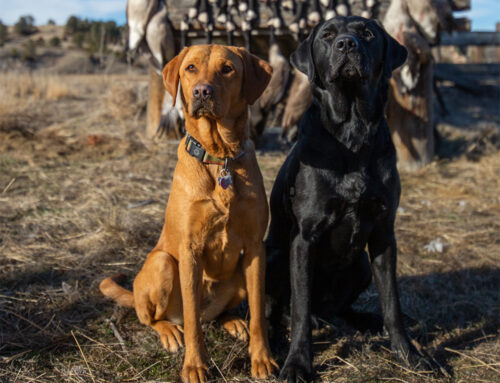
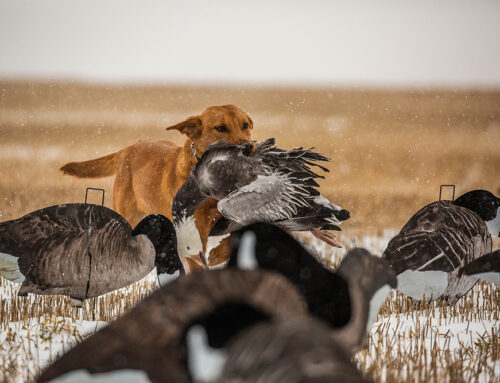
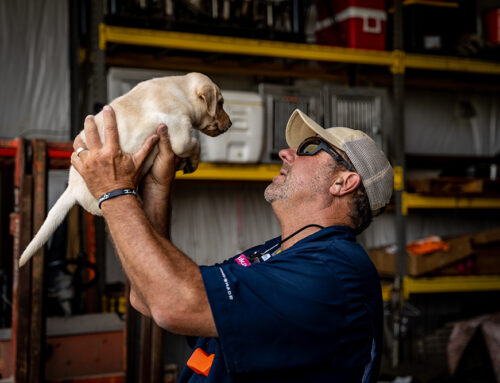
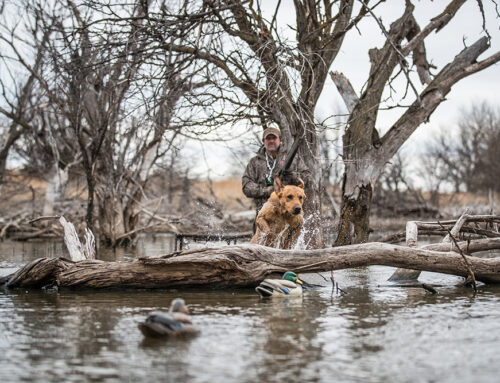
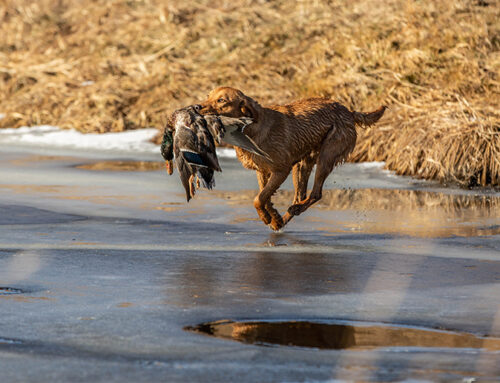
Labrador is not a province of Canada. It is the mainland portion of the old British Colony of Newfoundland. This north eastern section of North America became part of Canada in 1939 as the Province of Newfoundland and Labrador. The people and the dogs have a long shared history Labrador has always been a part of Newfoundland.